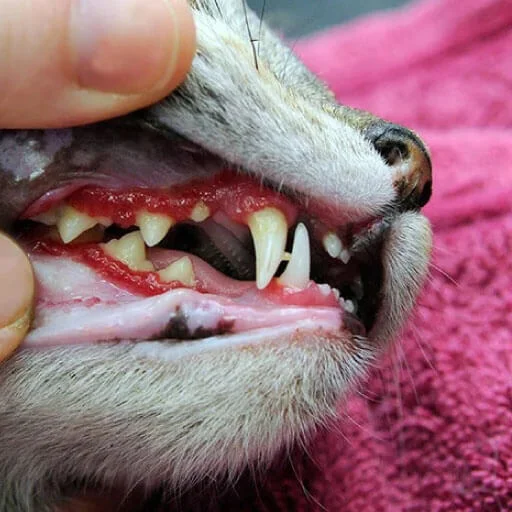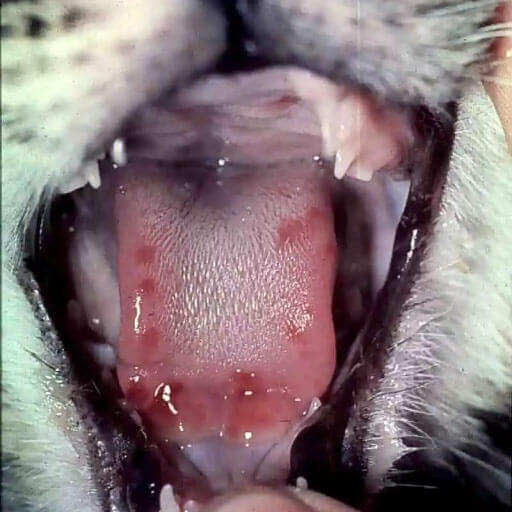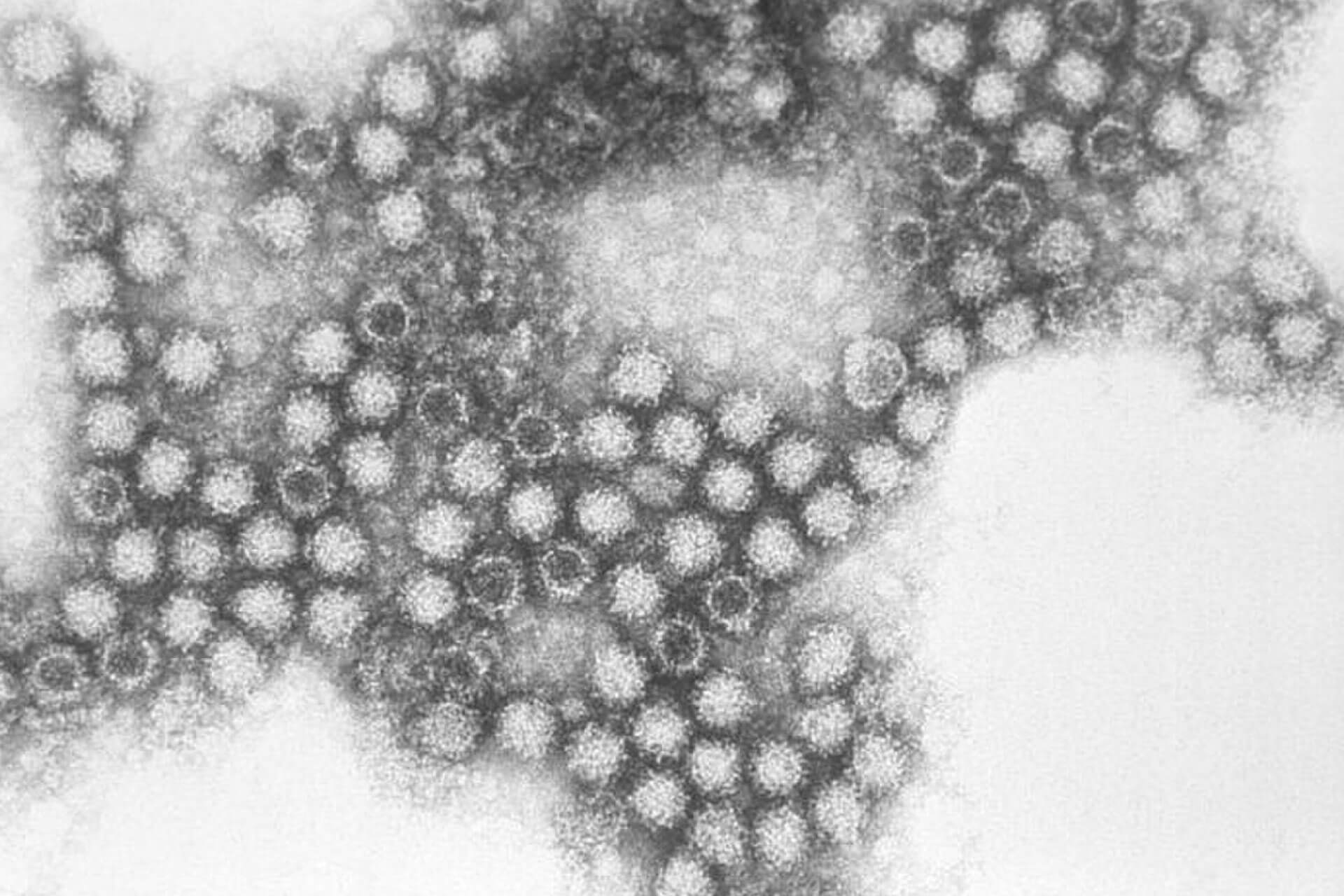Calicivirus is a very common infection across the world. Caliciviruses, which constitutes as one of the most dominant respiratory diseases in cats, can also infect many animals. The most common symptoms are sores in the mouth and redness of the gums.
The incubation period after infection is 2–6 days. Lesions infected with less virulent virus strains are usually confined to the respiratory tract, oral cavity, and eyes. Interstitial pneumonia can occur in kittens infected with virulent strains.

Figure I. (Intense inflammation of the gums)

Figure II. (ulcers in a cat’s mouth)
Mouth ulcer (Fig. II), inflammation and inflammation of the gums (Fig. I) is the most consistent pathological feature of mouth and upper respiratory tract disease caused by Feline Calicivirus. Ulcers (sores) typically begin as vesicles (small fluid-filled cell sacs) on the side of the tongue as well as other areas. These are then ruptured by necrosis of the overlying epithelium and infiltration of neutrophils in the periphery and base. Healing usually takes place over a two to three week period.
What are the Respiratory Effects of Mouth Sores in Cats?
Due to the large number of different strains of Feline Calicivirus, a range of clinical manifestations may occur. The most characteristic lesion is the frequently reported mouth ulcer, inflammation of the gums (redness) and inflammation. Eye and nose discharge are also common. Sometimes obscure infections or pneumonia may also occur. More severe respiratory infections can be fatal, usually in young kittens. Calicivirus strains can also cause an acute lameness syndrome.
It has been suggested that lameness, oral symptoms (inflammation and inflammation of the gums, ulcers in the mouth, etc.) and respiratory disease represent the two ends of a clinical continuum, that some individual strains tend to be extreme, and that the majority of strains can induce both of these clinical manifestations.
Can Feline Calicivirus (FCV) Cause Fever in Cats?
In addition to upper respiratory tract disease, various degrees of fever, cutaneous edema, ulcerative dermatitis, anorexia, hepatic jaundice and hematoma can be seen. Lesions and ulcers ranging from peripheral hyperemia to collapse of the entire soles of the feet will be seen. Ulcers in the nasal cavity, auricle, and hairy skin are variably present. Alopecia is observed in the legs and ventrum. There is marked subcutaneous edema affecting the face and limbs.
Adult cats are generally more severely affected than kittens. Outbreaks begin quickly, usually affecting less than 100 animals, and disappear quickly.
A small proportion of Feline Calicivirus carriers develop chronic lymphoplasmacytic or ulceroproliferative stomatitis, which may be resistant to treatment.
Acute Feline Calicivirus Symptoms
- coughing
- sneezing
- runny nose
- vomiting
- red eyes
- conjunctivitis
- Anorexia and high fever
With treatment , treating sick cats against secondary infections and using appropriate preparations for general symptomatic treatment helps cats. In the same way, oral treatment should be applied to help ulcers and inflammation in the mouth. Supporting the patient’s immunity and administering antiviral drugs will facilitate the treatment.
Broad-spectrum antibiotic therapy is generally recommended in cases of oral and respiratory disease to minimize potential complications associated with secondary bacterial infection. Because swallowing can be painful, antibiotics can be given as syrup (if available) or parenterally. Good nursing care is essential, along with the regular cleaning of any and all discharge. The cat should be encouraged to eat by offering strong flavored aromatic foods.
If eating is painful (due to the sores and sores in the mouth), liquefied or proprietary foods may be of some help. In some cases, the use of appetite stimulants may also provide some benefit. Some severely affected cases may require fluid therapy, and esophagostomy or gastrotomy tube may be indicated in cases of prolonged anorexia.
Oxygen supplementation should be provided regularly for cats with pneumonia. In addition to the treatments, the use of dexamethasone is recommended.
Control of the disease is provided by vaccination and treatment management procedures.






